Sound quality
I’ve had the chance to spend a lot of time with the original Aeons of both the closed and open variety. I had one memorable hour-long session with the Aeon closed plugged directly into a Chord Dave and Blu 2 M Scaler at a meet in Sydney, and it impressed me no end with its neutral tuning, and exceptional detail and clarity. Admittedly, it was a little on the lean end of the spectrum for me in terms of bass and dynamic heft, but altogether enjoyable nonetheless. I had the chance to tour the (then) MrSpeakers factory in San Diego back in January 2019 and I thoroughly enjoyed meeting Dan and team as well as getting the chance to listen to their range of headphones. The open variety of the original Aeons resonated with me so much that I ended up buying a pair on the spot and taking them back home to Sydney with me. The open Aeons were an altogether different proposition to their closed-back counterpart, offering a strangely more intimate presentation. However, what struck a chord with me was their lovely, velvety tuning that was simply agreeable. It has a degree more mid-bass heft and reach, and very much offers a more technically adept take on an HD650-esque sound.
Dan Clark Audio strived to give the second iteration of the Aeon 2 closed a more crowd-pleasing tuning, and they certainly did achieve that. The first time I heard the red closed-back Aeon 2 I immediately noted a warmer tuning, with a noticeably improved sense of perceived bass impact along with a less congested head-stage. So, how does the Aeon 2 Noire perform? Spending a good couple of weeks listening solely to the Noire gave me a good sense of its overall tuning, and it also proved to be a downright enjoyable experience as well.
Tonality.
The Aeon 2 Noire is has a relatively cold, lean sound which is dominated by a forward and sparkly upper treble but at the same time balanced with a modest bass boost around the 100Hz mark that gives it a mild ‘U-shaped’ signature. Tonally, the Aeon 2 Noire has a dry, metallic quality with a lot of upper treble sheen, and a lower mid-range that is relatively devoid of any sort of plush, romantic character. They are a technically adept pair of headphones and offer plenty of engagement and brilliance, but not indulgently so. The Aeon 2 Noire are able to dispatch complex and fast passages with aplomb and they have tremendous detail retrieval capabilities. They have an uncanny ability of being able to pull-out and separate individual layers in busy tracks, and point out things I’ve never heard before in a mix. But, at the same time, they have none of the warm, romantic timbre and organic decay that some listeners will label ‘fun’ and immediately warm to out of the box. While they are far more versatile than the original Aeon closed, the Aeon 2 Noire is still very much suited to those who appreciate a nuanced, layered and slightly bright presentation with high engagement-factor – these are not a ‘lean-back’ set of cans.
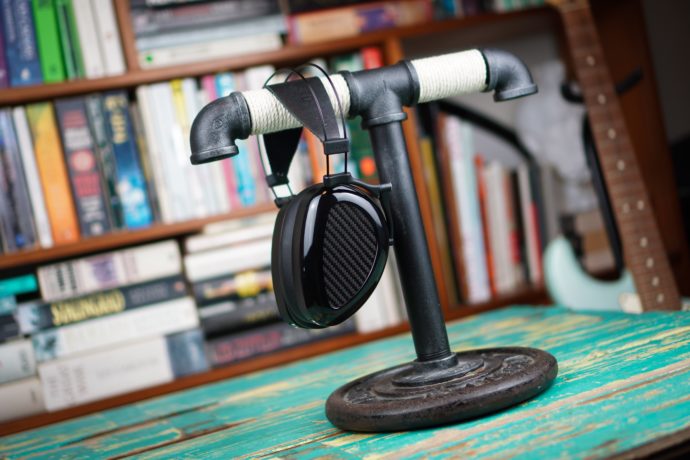
Treble.
I must qualify that while I labelled the Aeon 2 Noire as ‘slightly bright’, they’re not bright headphones in the traditional sense. There’s no troublesome energy in the sibilance area at all – actually I rather like their mid-range to treble transition. Rather, they have a lot of energy right up-top above 10Khz – there’s a lot of air and sizzle happening up there. And this is where the tuning inserts come into play: they can both tame, and hinder the standout characteristics of the Aeon 2 Noire, depending on what it is that you’re after. There really are four separate mechanical options with the Aeon 2 Noire – in addition to the three inserts, you can also listen to them without any damping at all.
Effect of tuning filters.
Listening to the excellent jazz recording of ‘Resistance’ by Bob Reynolds, there’s some real, tactile snap and sizzle from the percussion when no filters are in place. There’s also some genuinely welcome dynamic impact happening here compared to the more back-foot presentation of the original Aeon closed. Adding in the white felt inserts add immediately noticeable warmth and body to the mid-bass adding more felt low-end impact, and that sense of ‘sizzle’ and air is also immediately pared-back. Those of you who are more treble-sensitive and looking for a less fatiguing listen will probably want to reach straight for these, but those looking to keep a bit of air and excitement while taming the most shimmery of peaks might prefer to use the least-damping inserts – the black foam ones – instead. The black felt inserts neatly split the difference between the black foam and white felt, but it doesn’t quite have the sense of nimbleness as the black foam. Dan Clark Audio recommend not swapping out between the inserts over and over to try and gauge the minor differences between them, and I’d have to agree with this approach. While noticeable, the differences between each filter are nuanced and subtle, and you’re far better off trying them out for a few records at a time each and seeing what each of them is like to live with.
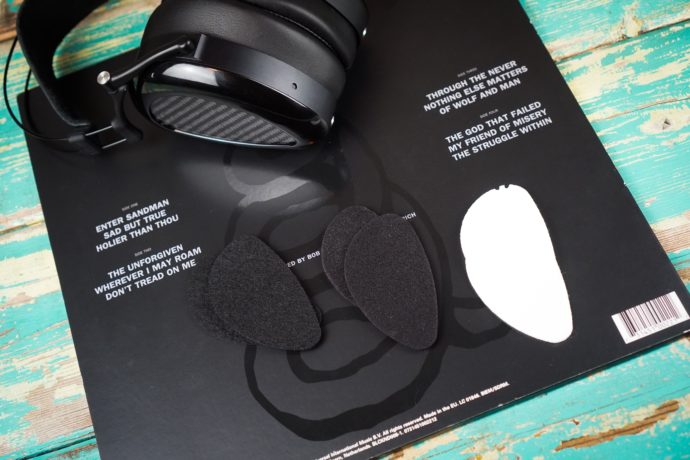
Mid-range.
Push them as you might, the Aeon 2 Noire won’t ever yield you an overly lush nor textured mid-range. Listening to ‘Defiant’ by Charles Lloyd, the Aeon 2 Noire’s inherently lean tone is evident here, lending a colder and slightly distant tone to his tenor sax. While it’s able to render the detail and nuance in every note, it’s not an intimate, emotional sort of performance with this kind of instrumental music with the Aeon 2 Noire. However, I must point out that this was a rather deliberate move in terms of tuning by Dan Clark Audio, and they’ve said so expressly on the website:
“The result is a “lighter” sounding midrange and a soundstage that moves the “stage” a bit further from the listener for a wider and deeper space”.
Staging and imaging.
Bruce Springsteen’s ‘I’m on Fire‘ shows the aforementioned claim from Dan Clark Audio to be indeed the case – the Boss sounds noticeably dry over the Aeon Noire, courtesy of that deliberate paring-back of warmth in the mid-range to boost the Aeon 2 Noire’s sense of air and staging. And therein lies this pair of headphones greatest technical triumph – its remarkable sense of space and imaging. While it’s not as intimate a performance as, say, with the HD650, the way the Aeon 2 Noire presents music on a left-to-right tableau is remarkable – it’s actually cavernous and immersive, and not just for a pair of closed-back headphones. The drum and guitar parts on the same Bruce Springsteen track feel like they are coming from ‘stage left’ and ‘stage right’ while The Boss is seated smack bang between your ears. I must note that there isn’t an overly huge sense of soundstage depth, however – it’s more of an in-head, and outside-of-ears experience.
When it comes time for unleashing the staging and imaging capabilities of the Aeon 2 Noire, it’s best to take the inserts out of the earcups completely. With a soaring, ephemeral track like ‘Sunblind‘ by Fleet Foxes, the unimpeded drivers treat you to a majestic, spacious sonic landscape and really show-off the best of the reverb and air in this track.
Bass.
The Aeon 2 Noire has a deep-reaching and lively low-end when fed with the right kind of music. While there’s no overt upper mid-bass hump that might otherwise lend it a sense of warmth and visceral ‘slam’, instead, Thundercat’s ‘Show You The Way‘ affirms that the Aeon 2 Noire is able to convincingly and skilfully strike notes below 100Hz with speed, texture, and reasonable dynamics. It’s a snappy and tight low-end but it has been sufficiently improved since the original Aeon closed to be able to let you enjoy more than a bit of low-end indulgence from time to time, without any sort of bloat or distortion. In fact, the Aeon 2 Noire is extremely well-suited to EQ, and will happily accept a 3-4dB bass-shelf below 120Hz without any sense of distortion creeping in.
Head over to page 3 for powering and pairing, and headphone comparisons.





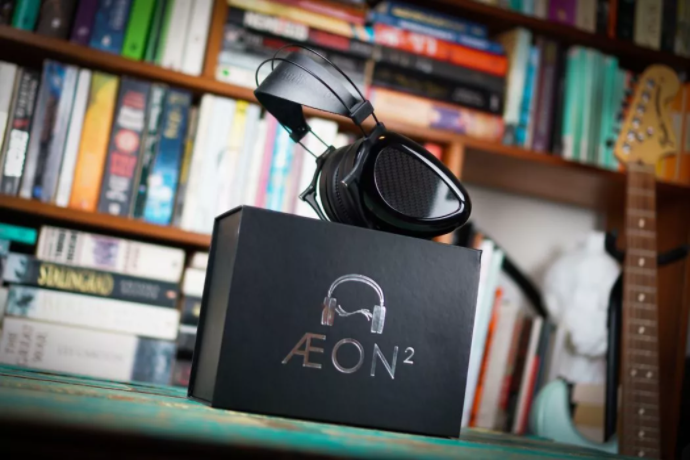
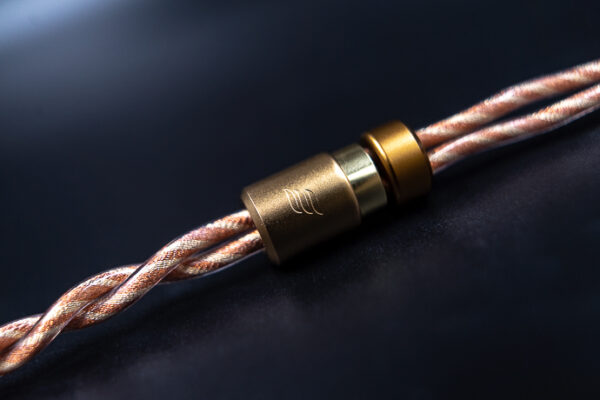
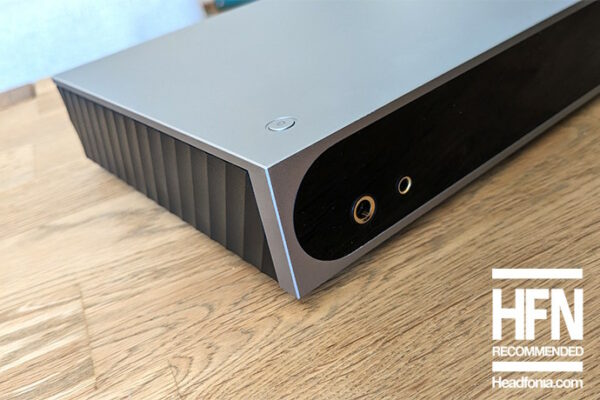
Hermanni Savolainen
Hi Matty!
Another banger of a review from you. I enjoyed every word of it😁👍. Anyway, when comparing the Aeon with the ath-wp900 did you feel like the Aeon is the overall superior headphone or are those just two different takes to same sound i.e. Is the Aeon better in technical abilities (detail, dynamics for example)
Cheers!
Matty Graham
That’s very kind, thanks for reading Hermanni! They’re like chalk and cheese – the Aeon 2 Noire is more resolving and detailed, but has a more reserved, even-handed approach when it comes to dynamics. The Ath-wp900 has far more punch and slam.
Shane D
Nice write up. I was always curious about these headphones.
Matty Graham
Cheers Shane, I’m glad you found it useful mate.
arielext
How do these stand against the Ether C Flow 1.1?
Matty Graham
It’s been a while since I’ve heard the Ether C, sorry mate. If I get my hands on a pair to compare with the Aeon 2 Noire I’ll update the article.
Matty Graham
I certainly know the difference Farb, it was some lazy sub-editing on my part mate.